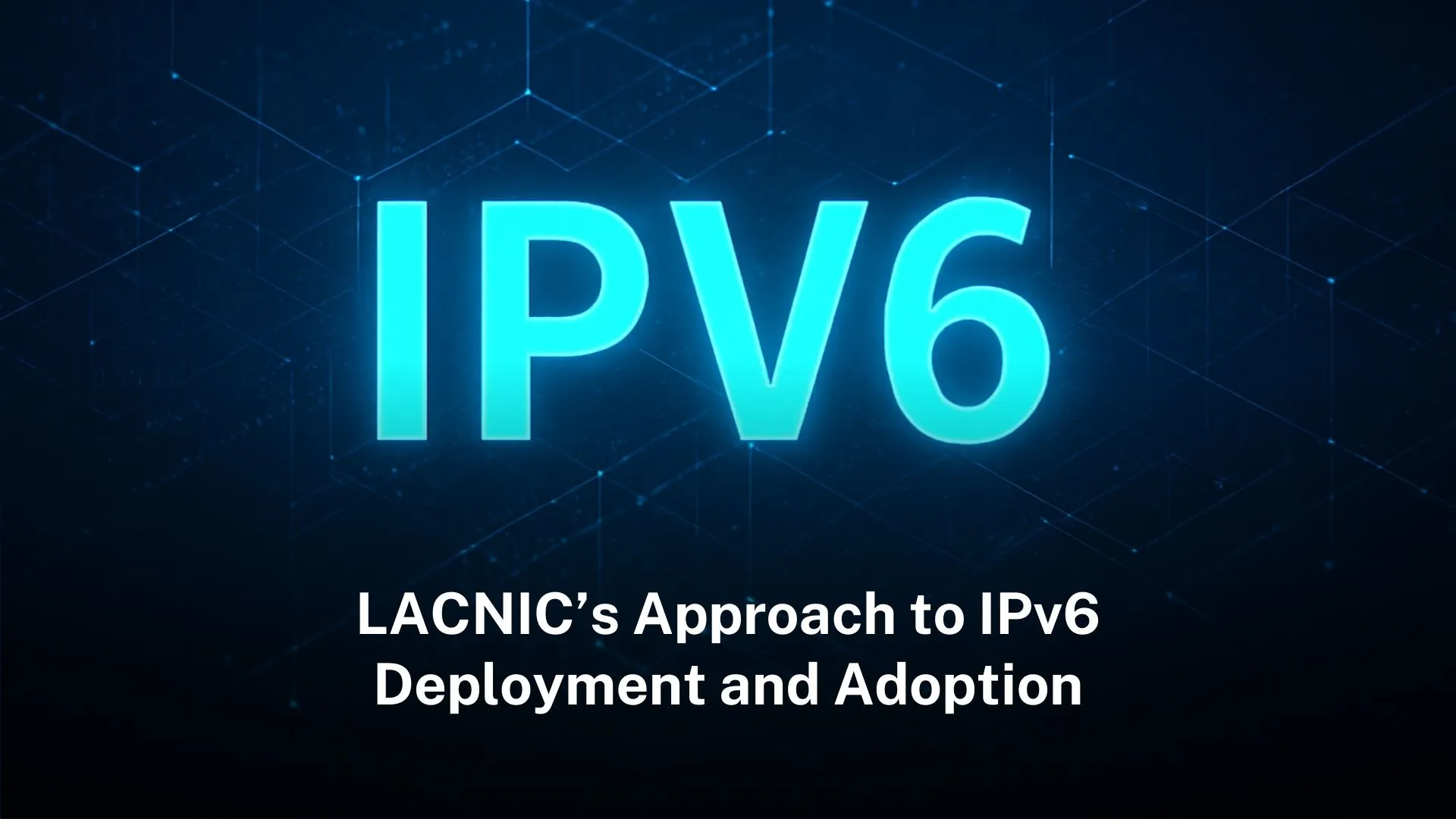· Bypassing standard top-down tactics, LACNIC’s multi-stakeholder, community-driven approach rendered Latin America and the Caribbean an unforeseen leader in IPv6 adoption rates.
Table of Contents
Toggle· To produce a sustainable IPv6-ready internet infrastructure, the organization’s strategy emphasizes on practical training, distributing resources, and fostering a culture of knowledge-sharing among network operators (nrs).
IPv6 revolution: how collaboration overcame digital scarcity
There exists a scarcity of addresses in the digital world. This is an actual fact that has been looming for over ten years, not a prophecy via the past. The foundational protocol that is currently used to route traffic across the internet since its inception, IPv4 addresses, was officially depleted years ago. From increased costs to obtain obsolete addresses to complex network administration that may hamper the very experience of being online, this scarcity causes away an orderly reaction of issues. IPv6 has been the answer to this existential crisis for a comparable the quantity of time. Global adoption has been a slow and seamless procedure, regardless of knowing that it’s tremendously expanded address space is so large the system may provide every atom on Earth a unique address.
A particular region has emerged as a remarkable and captivating leader in this global scene: Latin America and the Caribbean. This is not the outcome from a single government mandate or an extensive corporate initiative, in spite of common belief. Instead, the Latin American and Caribbean Internet Addresses Registry, or LACNIC, is an umbrella group that the has been the driving force. Its success story is communicated by means of a collaborative, highly human-centric governance model as opposed to only lines of code. Through an emphasis on empowering people to create and operate networks, LACNIC’s IPv6 implementation plan serves as a strong model for the rest of the world. It informs a story of how an army of network leaders may come together to protect the region of the internet to feed the future.
The pressing need to move beyond IPv4
One have to first understand the significance of the IPv4 exhaustion challenge before being able to truly understand the value of LACNIC’s work. Given that 32-bit addresses are utilized in the IPv4 system, there are currently approximately 4.3 billion combinations that are possible. This seemed to be an unbearably huge amount in the early days of the internet. Cependant that pool was already depleted from the rapid growth of connected devices, which include laptops and smartphones to sensors and home appliances. As an outcome, there’s has developed a thriving and pricey secondary market where enterprises must buy or lease dated IPv4 blocks, which renders it hard for startups and new ISPs to enter.
Plus, the standard method for allowing several devices to share a single public IPv4 address, which is called Network Address Translation (NAT), is a workaround as opposed to a solution. It complicates network security and management, improves latency, as well as rendering peer-to-peer applications harder to access, all of that being in contravention of the foundational end-to-end rules that define the internet. It is an interim measure which leaves the global network further susceptible to friction. With its 128-bit address space, IPv6 entirely resolves those problems and presents a more direct, scalable, and successful means for the web’s future further development. How we should transition has constantly been the question, somewhat of if we should.
LACNIC’s philosophy: building a community, not just a network
The strategy utilized by LACNIC is remarkably unlike the the traditional, top-down techniques which have previously implemented elsewhere. LACNIC acknowledged early on that a bottom-up movement was going to be required for sustainable adoption, while other regions have often leaned on policy mandates or the single efforts of large telecom companies. The multi-stakeholder model, a collaborative approach that connects engineers, entrepreneurs, policymakers, and educators from its diverse region, is the cornerstone of this organization’s philosophy.
This way of thinking experienced once summarized down by Oscar Robles, the former CEO of LACNIC, that declared, “The internet is a network of networks, but also a network of people.” Our strength in facing challenges like IPv6 adoption comes from the community’s capacity to collaborate, share experiences, and build consensus.” Their success has been according to their concentration on human networks. The fear and uncertainty which frequently coincide with a significant technological shift has been reduced by LACNIC’s development of a solid and dependable community of technical professionals. The following allowed knowledge and best practices to be freely shared.
Empowering the key players: training for network operators (nrs)
At the heart of any network deployment are the network operators, the nrs who design, configure, and maintain the infrastructure. LACNIC understood that these individuals were the most critical agents of change. If they lacked the skills or confidence to work with IPv6, adoption would stall. Consequently, a huge portion of LACNIC’s efforts has been directed towards massive, hands-on training and education programmes.
These are not theoretical lectures. LACNIC’s flagship initiatives, such as its renowned IPv6 Tour and numerous technical workshops, are practical, immersive experiences. They bring together nrs from different countries and organisations to configure equipment, troubleshoot real-world scenarios, and discuss implementation strategies. The efficient functioning associated with this peer-to-peer learning model is incredible. The experiences of a counterpart from a field of study Brazilian telco may assist an engineer from a small ISP in Paraguay, and vice versa. As an outcome, internal deployment plans become quicker as each trained professional returns to their business as an expert and advocate.
Allocating resources and providing critical tools
LACNIC is in responsible for controlling and allocating IP number resources in its position as the regional internet registry (RIR). It has established strategic decisions to utilize this position in order in order to encourage acceptance of IPv6. As opposed to the harder and harder process of acquiring confined IPv4 addresses, LACNIC has policies in place that have rendered it considerably simpler for businesses to obtain large blocks of IPv6 address space for years. Every company, regardless of size, can get the resources it needs to commence its deployment journey because of to this low barrier to entry.
Beyond simple dissemination, LACNIC has invested advancements into developing important community tools. The portal “IPv6 Enable,” which allows organizations to test and check whether or not their websites and services have been configured for the new protocol, is an excellent example. This particular kind of beneficial freely accessible tool simplify the process and gives an easily understood path to compliance, permitting enterprises to proactively identify and correct issues early. It indicates LACNIC’s adherence to delivering not merely addresses however the community of help necessary for the effective utilization regarding them.
Measuring success: the numbers behind Latin America’s lead
The data renders it overwhelmingly obvious that LACNIC’s community-driven approach is effective; it is more than anecdotal. A number of countries in LACNIC’s service region routinely rank among the most prominent IPv6 deployment economies in the world, according to information compiled by APNIC, the Asia-Pacific regional registry, which maintains one of the most frequently utilized adoption metrics. Developing nations like Brazil, Peru, and Ecuador have been showing adoption rates for years which are equivalent to or higher than those of many more prosperous, technologically highly developed nations in North America and Europe.
Google’s IPv6 statistics, which identify the amount of users who access Google via IPv6, frequently include strong numbers from the LACNIC region. This data suggests that an enormous percentage for internet users in Latin America and the Caribbean are taking benefit of the new protocol, often without becoming mindful of it. Their connections are produced attainable from an innovative, scalable infrastructure, which is a product of the hard work of their local ISPs and the nrs who received training and helped from LACNIC’s initiatives.This observable achievement supports the model and acts as a strong incentive for further advancement.
The road ahead: challenges and future directions
The work is far from completed, despite considering these significant developments. Adoption of IPv6 is a marathon, not a sprint. The “islands of IPv6” phenomenon is one of the continuing challenges. Despite the fact many regional ISPs have set up it on their access networks and major content providers like Google, Facebook, and Netflix are fully enabled, it continues to be tough to assure reliable interoperability through the entire internet ecosystem. Bottlenecks that demand dual-stack configurations or translation technologies may remain driven by legacy systems, certain enterprise networks, and some content delivery networks (CDNs). In the decades to come, LACNIC’s role will evolve from promotion to security and optimizing.
The primary focus is increasingly on guaranteeing that IPv6 networks are secure, successful, and operational. Deeper issues with technology, including the challenge of IPv6 prefix filtering and the complex nature of protecting the much larger address space, have recently been investigated from the community. As noted from IPv6 author and industry expert Tom Coffeen, “IPv6 operational practices, particularly within the domains of security and management, are still developing. The creation in these best practices for everyone depends upon the work being done in collaborative regions. For the purpose of to guarantee that the following phase of the evolution of the internet is both durable and resilient, LACNIC’s forums and meetings serve as an essential examination setting for these discussions.
A global example in collaborative innovation
The achievement about LACNIC with IPv6 is an inspiring illustration of the good that can be achieved when a community works together to achieve a shared goal. It indicates that people, trust, and a shared objective are similarly crucial to technological transformation as an hardware and software. In an effort to position its region for a sustainable digital future, LACNIC cracked the way to a wave of innovation and adoption by investing in its human capital, the network operators and engineers on the front lines.
Despite the IPv4 exhaustion hangover is still crippling the global internet community, the Latin American and Caribbean experience teaches a compelling and straightforward lesson. Even though there might be worth in top-down guidance, lasting transformation develops through one skilled engineer, one common experience, and one cooperative workshop at a time. LACNIC has succeeded in the enormous, regularly impersonal architecture of the internet by bearing in consideration that it is mainly a human network.
FaQs
1.What’s LACNIC?
The Latin American and Caribbean Internet Addresses Registry is referred to to be LACNIC. It is one of five Regional Internet Registries (RIRs) in responsible for regulating and providing ASNs and IP address resources (both IPv4 and IPv6) for the Latin American and Caribbean region.
2.Why is the implementation about IPv6 of such importance?
Since there are actually not any more IPv4 addresses readily accessible, IPv6 is crucial. The greatly expanded address space of IPv6 promises that the internet may grow and add billions of new devices. Furthermore, it provides technological benefits over IPv4, such as simpler network installation, enhanced security, and better routing that the decreases latency.
3.What exactly differentiates LACNIC’s marketing approach from that of other areas?
A community-driven, bottom-up tactics centered around network operator (nr) training and collaboration has become the primary objective about LACNIC. As opposed to reliance just on government laws or commercial orders, it developed an effective multi-stakeholder community where best practices and knowledge are publicly transferred. This had been exceptionally effective in quickening out practical, on-the-ground deployment.
4.Which LACNIC governments have begun implementing IPv6 during the greatest rate yet?
According to metrics from sources like APNIC Labs and Google’s IPv6 statistics, countries in the LACNIC region—which includes Brazil, Peru, and Ecuador—have been among what is happening leaders in IPv6 adoption rates for an assortment of years, frequently outperforming a number of developed nations.
5.What exactly are just a few of the multiple important resources that the LACNIC provide?
The ‘IPv6 Enable’ portal, one of LACNIC’s kindergarten community assets, permits organizations to assess and validate the IPv6 connectivity of their websites. Furthermore, it offers thorough training materials, operational guides, and an obtainable process for organizations to request and get IPv6 address space allocations.





Thanx for the effort, keep up the good work Great work, I am going to start a small Blog Engine course work using your site I hope you enjoy blogging with the popular BlogEngine.net.Thethoughts you express are really awesome. Hope you will right some more posts.
I believe you have remarked some very interesting points, thanks for the post.
Perfectly written. Not too simple, not too complex.